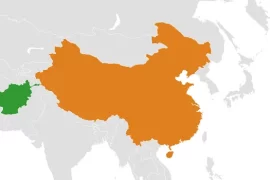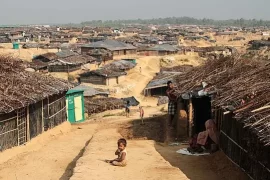A recent event of the killing of a Japanese citizen in Bangladesh has left the people of the two countries in a state of bewilderment, shock and distress. While the investigation into the murder of Kunio Hoshi is still in progress, people from both sides are eagerly waiting for the outcome. Both want to know who is behind Hoshi’s death and the reasons for his murder.
I am not going to lay out a detailed account of the killing of Kunio Hoshi that was shortly followed by another murder of an Italian citizen.
What most of the Bangladeshis believe is this: such an awful and miserable event can neither define nor conceal the essence of the relation of the two nations that have long been acquainted. Like many, I, too, have known since childhood that Japan is a peace-loving nation. Such faith is plausibly attributable to Japan’s longstanding record of assistance to Bangladesh through financial, technical and other means. Or perhaps, the way Japan has transformed itself into a peace-loving country through sharing of its peace dividend with the world.
I believe that there is an explicit interpretation of the two peoples’ allegiance, which is largely derived from mutual understanding, insights, and respect for each other. It took me not a single ODA Data or the list of future promises from Japan to understand the spirit of connection between the two nations, but glimpses of ordinary business with extraordinary ends.
A few months back, on a typically hot noon of an early summer day, while walking with a friend in the University of Dhaka, something drew my attention suddenly. It was a solo painting exhibition of Shiro Sadoshima, the then Ambassador of Japan to Bangladesh.
Inside the Zainul Gallery, welcomed by a pleasant surprise of the painting collections, we found ourselves briefly electrified with his Excellency Shiro Sadoshima’s experience in Bangladesh, its people and roots. I was just speechless for a while and lost in the beautiful drawings.
Rabindranath Tagore, one of the most revered poets, had once said, while standing on the soil of Japan nearly a century ago, “You see a people, whose heart has come out and scattered itself in profusion in its commonest utensils of everyday life in its social institutions, in its manners, that are carefully perfect, and in its dealings with things that are not only deft, but graceful in every movement.”**
These features of the Japanese people are evident even today. Evidence is laid here by the Japanese Overseas Volunteers who drew widespread attention when they were seen cleaning the garbage on the streets of Bangladesh. This volunteerism is not new, but was noticed by everyone, thanks to social media.
Should anyone know how the scholars, both old and young, and ordinary Bangladeshis look at Japan nowadays, take a glimpse of the aspirant students gather in a tiny classroom hardly able to accommodate all the students. Hailing from a multitude of backgrounds they come to the Japanese Study Center at the University of Dhaka for classes in the evening, many of whom arrive just after office duty. The center has turned into a hub for study, research, and knowledge gathering about Japan. Many eminent professors of the university as well as some distinguished young scholars come to share their perspectives, knowledge and wisdom on history, politics, economy and culture of Japan.
Like millions of Japanese and Bangladeshis, I’m completely dismayed by the killing of Kunio Hoshi. It makes me recall what Japan’s Prime Minister Shinzo Abe had ostensibly exposed while visiting Dhaka last year. Didn’t he seek to spellbind the two nations in a prosperous future based on a comprehensive partnership of mutual cognition and togetherness?
Read also: 10 BIGGEST COUNTRIES IN THE WORLD
***The Spirit of Japan”, (A lecture delivered in the year 1916 , for the students of the private college of Tokyo and membesr of the Indo-Japanese Association at the Keio Gijuku University) Rabindranath Tagore.
The writer is a broadcast journalist in the International Affairs Desk at NTV International Television Channel, Bangladesh.







